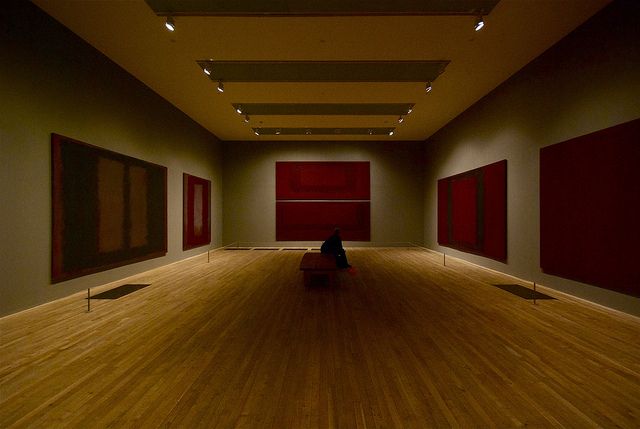
31 May The Rothko Room

Walking alone into the Rothko room in the Tate Modern, the room is cool and footsteps echo. The room is slightly dim and the works loom over me as I walk past them. The paint resonates, breathes, it sits slightly off the surface of the work, the colours are soft but humming. It feels like being in a place of worship, a temple.
This room has significance for the project as an embodied experience of the power of a painting as an object. My previous work (pre this project) has been, for the most part, representational. This project begins an exploration of landscape and the tension between representational artmaking, painting in situ and in process, and painting as a distillation or a dissolve between the viewer and the emotion of the landscape. These approaches collectively contribute to processes of abstraction.
These works also inform structural considerations of the project, and the physical relationship that the viewer has with a work. This room of paintings is an installation – the lighting is lowered, and the walls subdued, to Rothko’s specifications. The height of these works mean they enclose you, and when standing close to the works they are made to fill your visual field meaning you feel physically part of the work. These elements provoke a visceral response as an embodied experience. Rothko’s Seagram murals provide an example of how this dissolution can be portrayed and also engender an embodied experience for the viewer. These reactions and relationships parallel my project’s exploration of embodiment and landscape as a dissolve between body and landscape.



No Comments